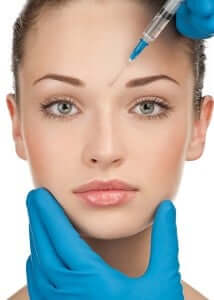Facial Injectables
Facial Injectables
 Botox® (Botulinum toxin A) as an Alternative Treatment for TMJ (not only wrinkles reduction)
Botox® (Botulinum toxin A) as an Alternative Treatment for TMJ (not only wrinkles reduction)
TMJ symptoms often change in severity, depending on how much stress the sufferer is experiencing. During an intensely stressful period, grinding teeth, debilitating earaches, and lockjaw may occur. The injections can be an effective and painless way to alleviate tension in the temporomandibular joint, reducing jaw pain, headaches, and suffering.
Botox® is commonly associated with cosmetic practices, including eliminating glabellar lines and facial wrinkles. Recently however, it has become an increasingly popular TMJ treatment and it can offer fast and long-lasting relief.
The benefits Injectables offer TMJ sufferers:
-
Elimination of headaches caused by nighttime grinding.
-
Minimization of lockjaw.
-
Reduced discomfort when using the jaw.
-
Reduced shoulder and neck pain.
-
Substantially reduced jaw tension.
- Reduction of facial wrinkles associated with the treatment.
What to expect after the treatment?
After the TMJ Treatment muscle tenderness will start to disappear almost immediately. Wrinkles begin to disappear within 24 – 48 hours after the injections, and you may continue to see the wrinkles diminish up to one week after the procedure. There may be mild temporary bruising, numbness, or redness around the injection sites. You will not look 20 years younger, but you may find that you look more natural and relaxed or less sad and angry. A small number of patients treated with Botox injections reported no noticeable difference in the reduction of their wrinkles.
What is the recovery from the TMJ treatment Like?
Because the procedure is non-surgical and non-invasive, it is highly likely that the patient can return to normal activities immediately. However, to avoid spreading the toxin to other muscles, patients should not rub or massage the area injected with Botox and remain upright for many hours.
How does it work?
The temporomandibular joint is located on both sides of the head where the skull adjoins the jawbone. This joint is constantly being used for a variety of daily activities, such as chewing, biting, speaking, and swallowing. The most prominent causes of TMJ are jaw displacement and stress-related involuntary jaw movements. Botox® expediently alleviates temporomandibular tension by relaxing the jaw muscles, thus preventing unconscious jaw movement and ending grinding-related headaches.
One of the major advantages of Botox® is that normal functions such as speaking, swallowing, and biting are left unaffected. The only major change is the reduction in pain and discomfort. In addition, controlling TMJ can also prevent serious dental problems from occurring later. TMJ, if left untreated, can contribute to tooth decay, gum disease, and the loosening of teeth.
What’s involved when getting the injections?
Prior to administering the injections, our dentists need to check the patient’s suitability for treatment. Botox® is not recommended for pregnant or lactating women.
The injections take 10-20 minutes to administer, depending on the amount required. Because it is non-surgical, the procedure will be performed at the dental office. Driving ability will not be impaired by the treatment, so there is no need for a designated driver. The injections are no more painful than a bug bite or pinprick, but nitrous oxide (laughing gas) can be used to reduce anxiety if necessary.
Normal activity can be resumed immediately after the treatment, but strenuous activity should be avoided for 24 hours after treatment. It may take several days to feel the full benefits of the treatment, but it will continue to work for up to 3 months.

